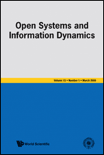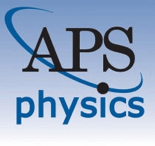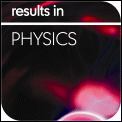
npj Quantum Information
Scope & Guideline
Elevating the discourse in quantum information science.
Introduction
Aims and Scopes
- Quantum Communication and Cryptography:
Research in this area includes the development of secure quantum key distribution protocols, quantum communication networks, and methods to enhance the security and efficiency of quantum cryptography. - Quantum Computing and Algorithms:
This encompasses the design and analysis of quantum algorithms, quantum circuit architectures, and error correction methods, with a focus on practical implementations on near-term quantum devices. - Quantum Measurement and Sensing:
Studies in this domain explore advanced techniques for quantum state measurement, quantum sensing applications, and the underlying quantum mechanics that enable high-precision measurements. - Quantum Information Theory:
This involves theoretical investigations into the foundations of quantum information, including entanglement, coherence, and the capacity of quantum channels, contributing to the mathematical understanding of quantum systems. - Quantum Materials and Devices:
Research focused on the development and characterization of new quantum materials, qubits, and other devices essential for building quantum technologies, including superconducting qubits and quantum dots.
Trending and Emerging
- Quantum Networking and Entanglement Distribution:
There is a growing focus on the development of quantum networks, including methods for entanglement distribution, network protocols, and practical implementations for secure communication over long distances. - Advancements in Quantum Error Correction:
Research is increasingly centered on innovative error correction techniques, particularly for near-term quantum devices, addressing challenges such as noise and decoherence that threaten quantum computation. - Integration of Machine Learning in Quantum Systems:
The intersection of machine learning and quantum information has emerged as a significant area, with studies exploring how machine learning can enhance quantum algorithms, error mitigation, and system optimization. - Quantum Technologies for Sensing and Metrology:
There is an increasing emphasis on the application of quantum principles for high-precision sensing and metrology, aiming to leverage quantum effects to surpass classical limits in measurement accuracy. - Variational Quantum Algorithms and Optimization:
The trend towards variational algorithms, particularly for optimization problems and quantum chemistry, is gaining traction, as researchers seek efficient methods to leverage quantum computing for practical applications.
Declining or Waning
- Classical-Quantum Hybrid Systems:
Research on hybrid systems that combine classical and quantum elements has become less prominent, as the focus shifts towards more purely quantum systems and their capabilities. - Basic Quantum Mechanical Foundations:
While foundational studies in quantum mechanics were once prevalent, the current trend is moving towards applied research that translates quantum theories into practical applications, resulting in fewer publications on purely theoretical aspects. - Quantum Simulation of Simple Models:
The exploration of basic quantum systems and models for educational purposes has waned, with a greater emphasis now on complex, real-world applications and experiments that leverage the capabilities of advanced quantum technologies.
Similar Journals

LASER PHYSICS LETTERS
Connecting Theory and Practice in Laser PhysicsLASER PHYSICS LETTERS is a prestigious peer-reviewed journal published by IOP Publishing Ltd in the United Kingdom, focusing on the burgeoning field of laser physics and its applications. With an ISSN of 1612-2011 and an E-ISSN of 1612-202X, this journal stands at the intersection of innovative research and practical applications, addressing diverse topics within the realms of Instrumentation and Physics and Astronomy. Recognized for its impactful contributions, it boasts a ranking within the Q3 quartile for both relevant categories as of 2023, reflecting its steady rise and commitment to advancing knowledge in the area. Researchers and practitioners are encouraged to explore its content and contribute to the ongoing discourse that shapes the future of laser technologies. While LASER PHYSICS LETTERS does not currently offer open access options, its rigorous selection criteria ensure that published work is of the highest quality, positioning it as a vital resource for anyone engaged in laser science and engineering.

QUANTUM INFORMATION & COMPUTATION
Driving Insights in Quantum Mechanics and ComputationQUANTUM INFORMATION & COMPUTATION is a leading academic journal dedicated to the rapidly evolving fields of quantum information theory and quantum computing. Published by RINTON PRESS, INC, this journal serves as a pivotal platform for disseminating groundbreaking research, advancements, and theoretical insights in various domains including computational theory, mathematical physics, and high-energy physics. With its ISSN 1533-7146, the journal has established a solid reputation since its inception in 2001 and continues to engage researchers up to 2024. Despite its current standing in Q4 and Q3 quartiles across various categories, QUANTUM INFORMATION & COMPUTATION provides valuable contributions by fostering discussions on interdisciplinary applications and theories that challenge conventional paradigms. While the journal does not offer open access, it still supports a wide range of research topics, providing a vital resource for academics, professionals, and students keen on exploring the complex interplay between quantum mechanics and computation. By focusing on innovative techniques and theoretical developments, this journal is essential for anyone aiming to be at the forefront of the quantum revolution.

AVS Quantum Science
Transforming Ideas into Quantum RealitiesAVS Quantum Science, published by AIP Publishing, is a premier open-access journal dedicated to the interdisciplinary realm of quantum science, encompassing advancements in atomic and molecular physics, computational theory, and materials science. With an impressive array of contributions from researchers worldwide, this journal has achieved a remarkable status in the academic community, proudly holding a Q1 category ranking across multiple fields including Condensed Matter Physics and Electrical and Electronic Engineering as of 2023. As an essential resource for scholars, practitioners, and students, AVS Quantum Science emphasizes the critical importance of quantum phenomena in shaping future technologies and methodologies. The journal's commitment to rigorous peer review and dissemination of groundbreaking research serves as a pivotal platform for innovation, revealing new insights and fostering collaboration in the evolving landscape of quantum science.

Quantum Studies-Mathematics and Foundations
Unraveling the mysteries of quantum foundations.Quantum Studies-Mathematics and Foundations, published by SPRINGER, is an esteemed academic journal dedicated to advancing the field of quantum theories by providing a platform for the intersection of mathematics, physics, and foundational principles. Established in 2014, the journal has garnered a respectable impact factor within the academic community, reflective of its commitment to quality research, acknowledged in its Q3 ranking in both Atomic and Molecular Physics and Mathematical Physics for 2023. With a focus on groundbreaking studies that explore the subtleties of quantum mechanics and its mathematical underpinnings, the journal aims to foster innovative research and contribute to the discourse among researchers, professionals, and students alike. Although the journal operates on a non-open access model, it provides invaluable insights that bridge theoretical frameworks with practical applications in the quantum realm. The journal is located in a prime academic hub in Switzerland, making it a significant contributor to the global dialogue in physics and mathematics.

OPEN SYSTEMS & INFORMATION DYNAMICS
Transforming Complex Systems into Understandable Dynamics.OPEN SYSTEMS & INFORMATION DYNAMICS, published by World Scientific Publishing Co Pte Ltd, is a leading international journal dedicated to advancing research in the interdisciplinary areas of computational mechanics, information systems, and mathematical physics. With its ISSN 1230-1612 and E-ISSN 1793-7191, the journal has established itself as an influential platform for disseminating original research findings, reviews, and methodologies that address complex systems and dynamics. Its current impact factor reflects a solid reputation within the academic community, particularly amongst researchers in the fields of physics, statistics, and computational sciences. The journal's scope encompasses a diverse array of subjects, earning a Q2 classification in Computational Mechanics and Q3 in multiple other categories, including Fluid Flow and Transfer Processes and Information Systems. By providing open access to a wealth of knowledge, OPEN SYSTEMS & INFORMATION DYNAMICS is committed to fostering collaboration and innovation for students, researchers, and industry professionals alike, positioning itself as a cornerstone of scientific exploration and discovery in Singapore and beyond.

PHYSICAL REVIEW A
Elevating Understanding of Quantum PhenomenaPHYSICAL REVIEW A, published by the American Physical Society, is a leading journal in the field of Atomic and Molecular Physics and Optics, boasting a Q1 category ranking in its area for 2023. With an ISSN of 2469-9926 and an E-ISSN of 2469-9934, this journal plays a pivotal role in disseminating high-quality research findings, theories, and methodologies that shape current understanding and advancements in the discipline. Although not an open-access journal, it remains highly accessible to professionals and academia through institutional subscriptions. The journal's impactful contributions are evident from its Scopus rank of #70 out of 224 in the field, placing it in the 68th percentile for scholarly impact. As a hub of innovative research and a vital resource for both students and seasoned researchers alike, PHYSICAL REVIEW A remains essential for those seeking to stay abreast of breakthroughs in atomic and molecular studies, as well as optics and photonics.

Results in Physics
Your Gateway to Cutting-Edge Physics DiscoveriesResults in Physics, an esteemed open-access journal published by ELSEVIER, has been a prominent platform for disseminating cutting-edge research in the field of physics since its establishment in 2011. With its ISSN 2211-3797 and E-ISSN 2211-3797, this journal proudly holds a Q2 ranking in the Physics and Astronomy category for 2023, showcasing its significance and quality within the scientific community. With a remarkable Scopus rank of #28 out of 243 in the general physics and astronomy domain, placing it within the 88th percentile, Results in Physics serves as a vital resource for researchers, professionals, and students alike, fostering a collaborative environment for the advancement of knowledge across various subfields. The journal aims to provide a rapid and unrestricted access to innovative findings, encouraging open scientific dialogue and enhancing the visibility of breakthrough research. Located in the Netherlands at RADARWEG 29, 1043 NX AMSTERDAM, Results in Physics continues to uphold its commitment to excellence and accessibility in the ever-evolving landscape of physics research.

Advanced Quantum Technologies
Unveiling Breakthroughs in Quantum ResearchAdvanced Quantum Technologies is a leading journal published by WILEY, specializing in the rapidly evolving fields of quantum mechanics and technology. With an impact factor reflecting its rigorous peer-review process and high-quality research, this journal aims to disseminate the latest advancements across multiple disciplines, including Computational Theory and Mathematics, Condensed Matter Physics, and Electrical and Electronic Engineering. Since its inception in 2018, it has garnered a prominent reputation, as evidenced by its Q1 ranking in several categories for 2023 and its high percentiles in Scopus rankings, showcasing its significant contributions to the academic community. Researchers and professionals alike will find valuable insights within its pages, promoting innovations that bridge theoretical frameworks and practical applications. Although currently not an Open Access journal, Advanced Quantum Technologies continues to strive for excellence, ensuring that its content is accessible and impactful to those who are shaping the future of quantum technologies.

EPJ Quantum Technology
Fostering Collaboration in the Quantum RealmEPJ Quantum Technology is a prestigious open-access journal published by Springer, dedicated to advancing the fields of Quantum Technology, with a focus on areas such as atomic and molecular physics, condensed matter physics, and control engineering. Launched in 2014, this journal has quickly established itself as an influential platform for scholars and practitioners, achieving a remarkable Q1 ranking across multiple categories in 2023, indicative of its high impact and relevance in the scientific community. With an impressive Scopus ranking that places it in the top 15% for condensed matter physics and the top 20% for electrical and electronic engineering, EPJ Quantum Technology serves as a vital resource for researchers aiming to explore groundbreaking technologies and foster interdisciplinary collaboration. By providing unrestricted access to cutting-edge research, it plays a crucial role in disseminating knowledge that drives innovation and enhances understanding in this rapidly evolving field. Based in Germany and reaching an international audience, it is poised to impact the future of quantum science and technology significantly.

OPTICAL AND QUANTUM ELECTRONICS
Connecting Theory and Application in Quantum ElectronicsOPTICAL AND QUANTUM ELECTRONICS, published by SPRINGER, is a premier journal dedicated to advancing the fields of atomic and molecular physics, optics, and electronic engineering. With an ISSN of 0306-8919 and an E-ISSN of 1572-817X, this journal has established itself as a vital resource for researchers, professionals, and students alike, contributing to the discourse from its inception in 1969 to its continued publications through 2024. It holds impressive rankings in Scopus, placing within the top percentiles for its categories, specifically in the 64th for Electrical and Electronic Engineering and 63rd for Atomic and Molecular Physics. Though it does not currently offer open access options, the journal's robust impact factor reflects its importance within its field, making it an essential reference point for cutting-edge research and developments in materials science and optics. Through its rigorous peer-review process, OPTICAL AND QUANTUM ELECTRONICS remains committed to publishing high-quality, influential studies that push the boundaries of innovation and understanding in these dynamic areas of science.